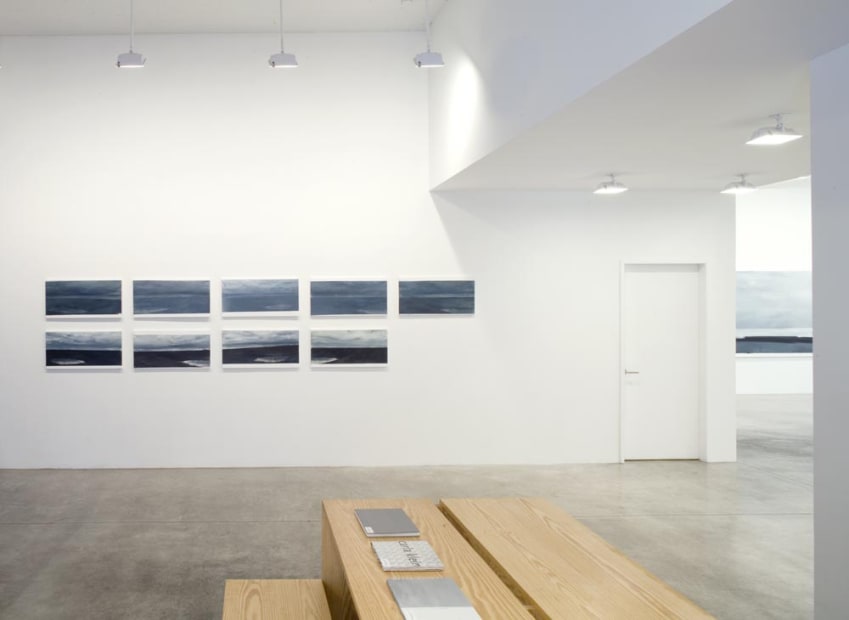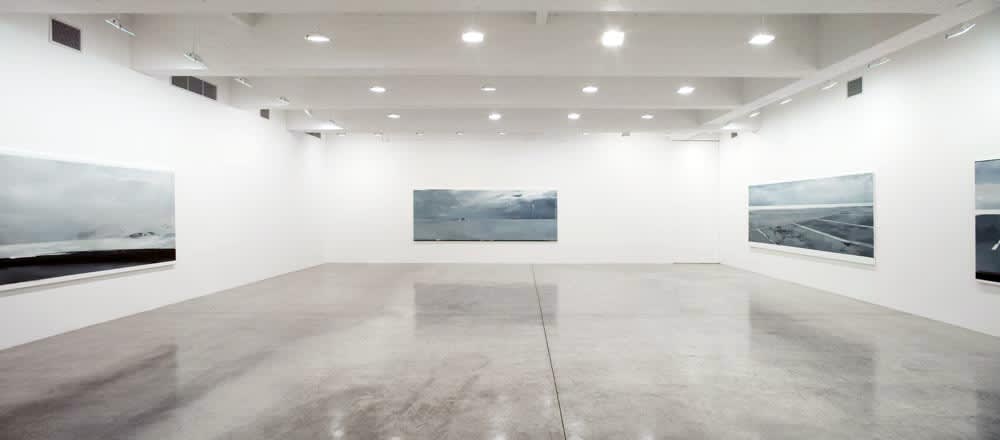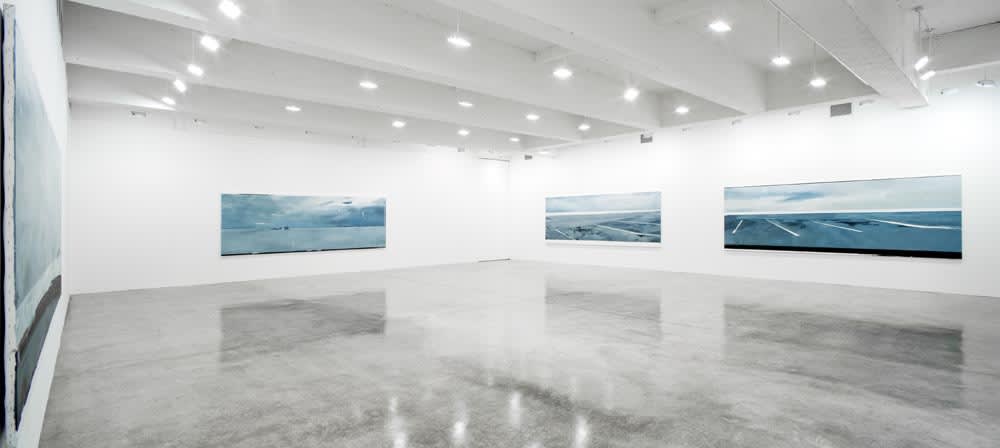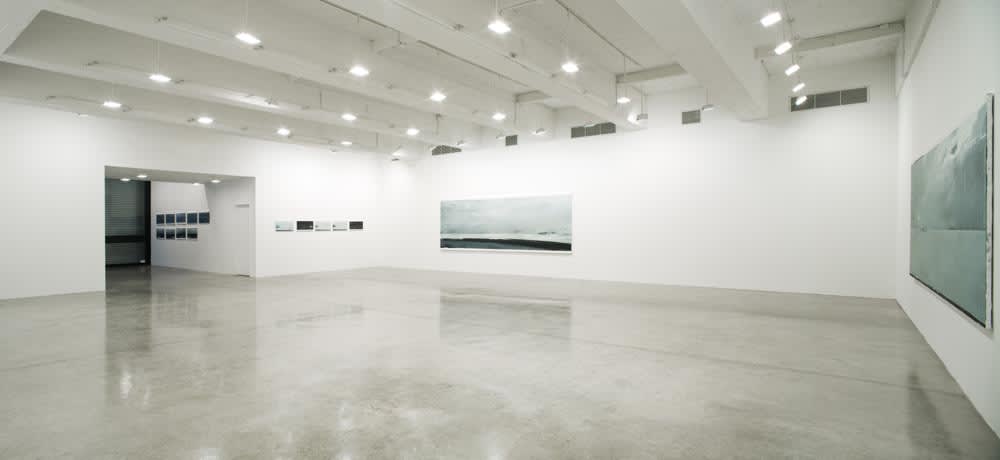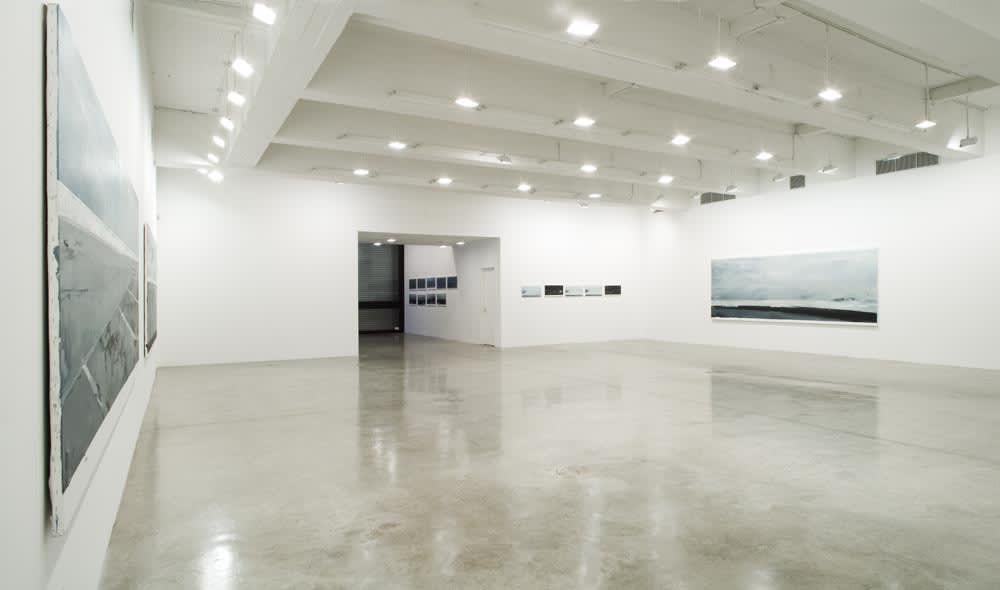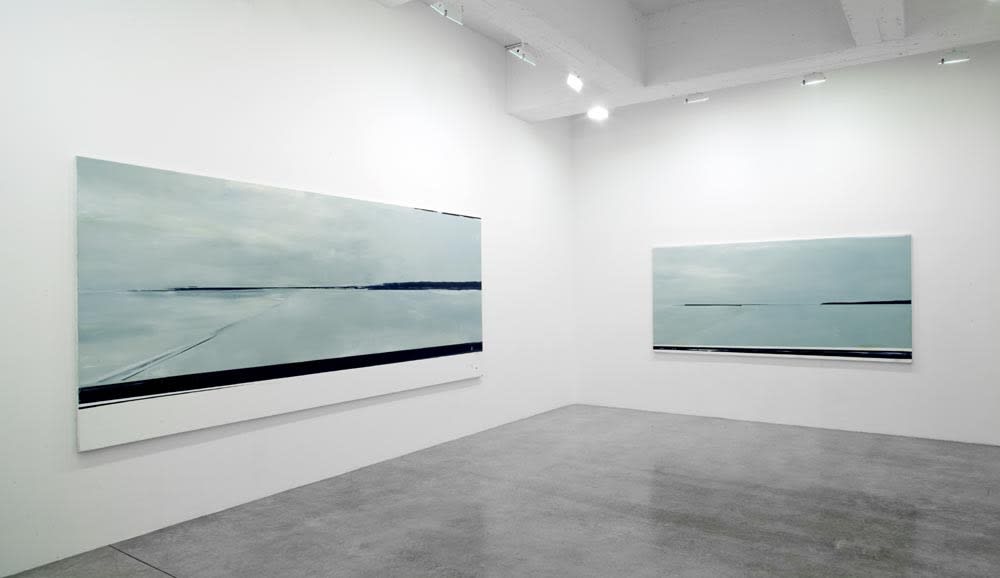Carla Klein: Tanya Bonakdar Gallery, New York
Tanya Bonakdar Gallery is very pleased to present an exceptional selection of panoramic landscape paintings by Carla Klein in Gallery one. These new pieces, which comprise Carla’s fourth solo exhibition with the gallery, continue to explore and expand on the artist’s signature fusion of the abstract and the hyper real, and in the artist’s words, “create a form of painting where contradictions and oppositions are accommodated and merge into one overall result.”
Using her own photography as the primary source imagery for her most recent works, Klein’s dynamic compositions depict unpopulated terrain, shot by the artist during her travels. In a palette of near-black, inky blue, soft gray and cold white, Klein captures the essence of these uninhabited territories; a stormy waterfront, a patch of empty parking lot, an open expanse of the Salt Lake in Utah, each location seems simultaneously familiar and utterly foreign under her brush, at once stark and dramatic, severe and serene. Exquisitely rendered, these topographies form a part of the ongoing documentation of her journeys, and taken together the paintings create an expressionistic travelogue, enlarged from the negative to the snapshot, and from the snapshot to the canvas.
Klein’s initial photograph and its subsequent abstraction represent a layered approach to capturing a moment in time, poetically revealing the levels of mediation that frame our contemporary experience of the world and questioning whether the depiction of “reality” is possible. Each painting illustrates artifacts of the imaging process, which Klein terms the “abstract consequence” of the photo; white borders on the canvas represent the void where the image has been cropped, black lines at the edge of the image suggest the border of the photographic print, and drips of paint reference scratches on the surface of the negative. Prints developed from chemical baths that have been used and depleted produce a melding of color and shape and a muting of tone, which Carla transfers to the canvas; digital shots of night scapes, printed on paper saturated with the printer’s ink, become opaquely black landscapes, impenetrably dark. None of these “imperfections” is intentional, each is a result of the mechanical process of reproducing her shot, but by enlarging and reinterpreting these photographic artifacts on her canvases, Klein points to the impossibility of precise reproduction even in the seemingly most objective media.
